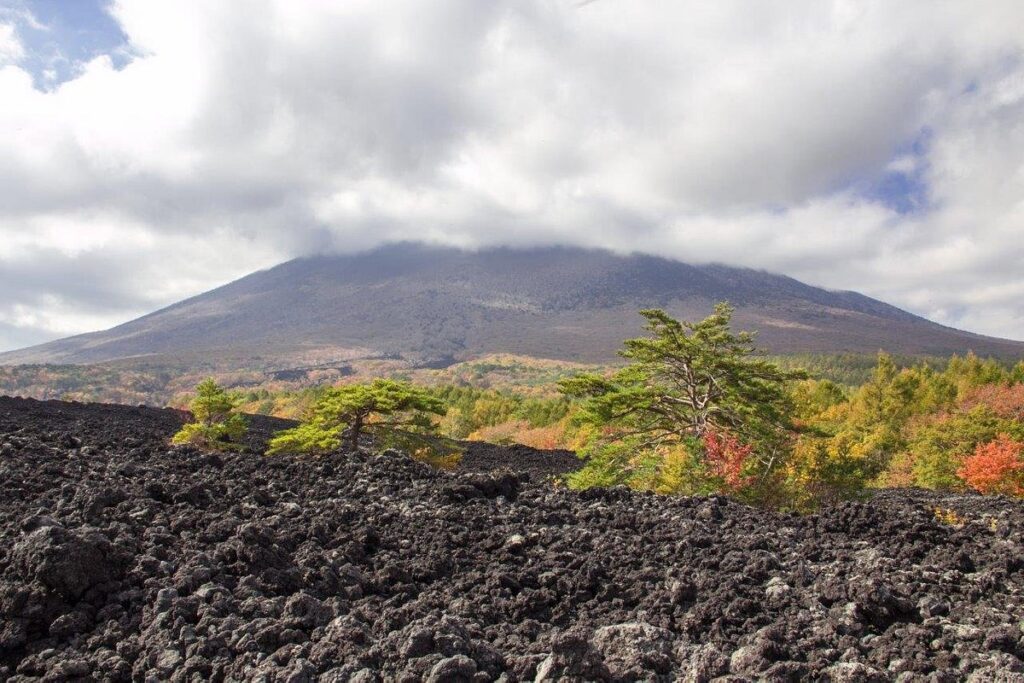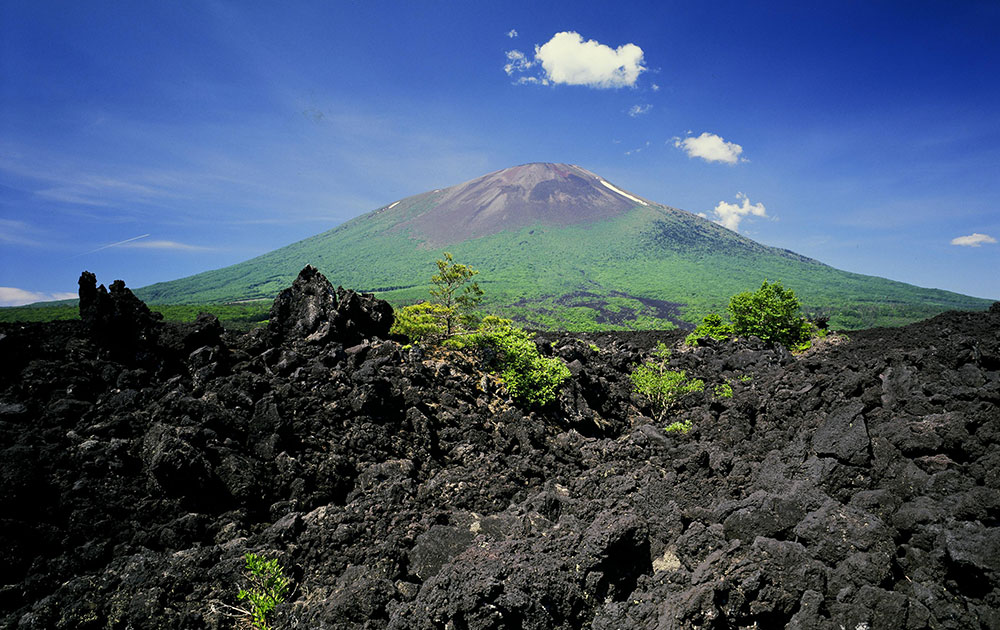The Yakehashiri Lava Flow and the Power of Nature
The Yakehashiri Lava Flow is the result of a volcanic episode that occurred in 1732. Lava erupted from several fissures on the northeastern slope of Mt. Iwate, between 920 and 1,200 meters above sea level, and flowed about 3 kilometers down the mountain. At its broadest point, the expanse is 1 kilometer wide. In the area around the observation path, the depth of the lava flow ranges from 5 to 10 meters.
The rocks found around Yakehashiri vary in size, from fist-sized to as large as 1 meter in diameter. Composed of olivine-bearing augite hypersthene andesite, the individual rocks differ in weight and surface texture, primarily due to different weathering patterns. The surface temperature of the flow can be as high as 40°C in summer and as low as -20°C in winter, creating a harsh environment.
Lava flows are relatively common in Japan, but Yakehashiri stands out for several reasons. For one, the precise date of the eruption is known. Also, the flow has not seen any significant topographical changes. Furthermore, despite being nearly 300 years old, the flow is still unable to sustain much vegetation; only mosses, lichens, and a small number of vascular plants grow on the volcanic rock. As a result, it remains virtually unchanged, making it a fascinating place for scientists to study.



